Naomi Feinberg: the sculptor who carved a place for herself in a man’s world
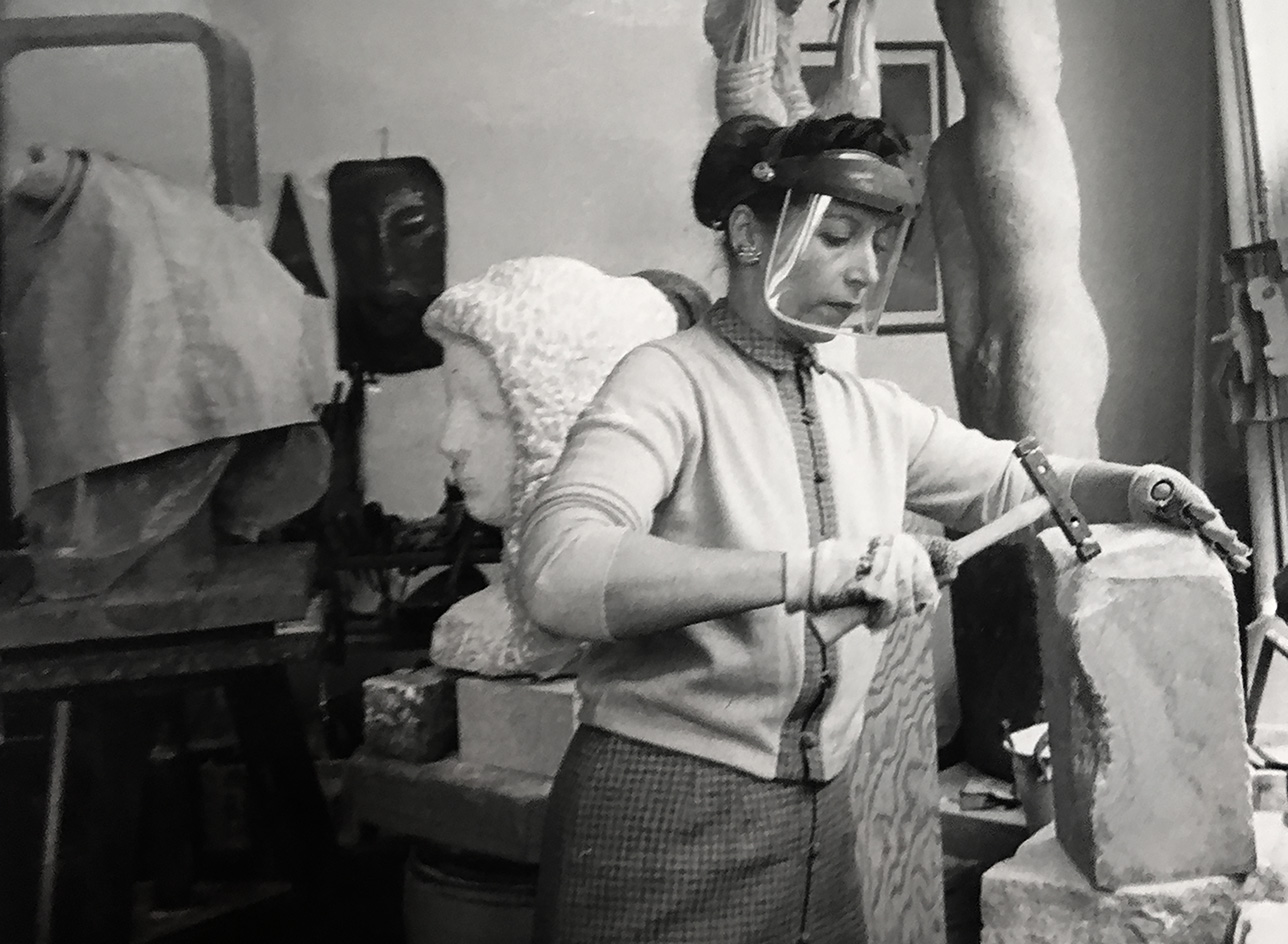
Lobel Modern has unveiled a compelling display of work from the late artist Naomi Feinberg, a woman at the helm of American 20th-century sculpture. Focusing on 14 mid-career pieces from the 1960s and 1970s, the exhibition coincides with the 10th anniversary of the New York Design Center, where the showroom is located.
Gallerist Evan Lobel first encountered Feinberg in his original Chelsea gallery in the early 2000s, when she was already well into retirement. She expressed an appreciation for his curation, and he in turn fell for her ‘primitive yet sophisticated’ constructions.
Composed primarily of limestone, granite and marble posed on circular or cubic plinths, Feinberg’s sculptures radiate a hand-carved physicality, harmonising the materials’ characteristics with the imprints of her own body. Feinberg references cubism, African and pre-Columbian art to create multifaceted anthropomorphic forms. Sinuous curves meet abrupt cubic blocks as the artist fuses hard-edged architectural configurations with elements of the human form.
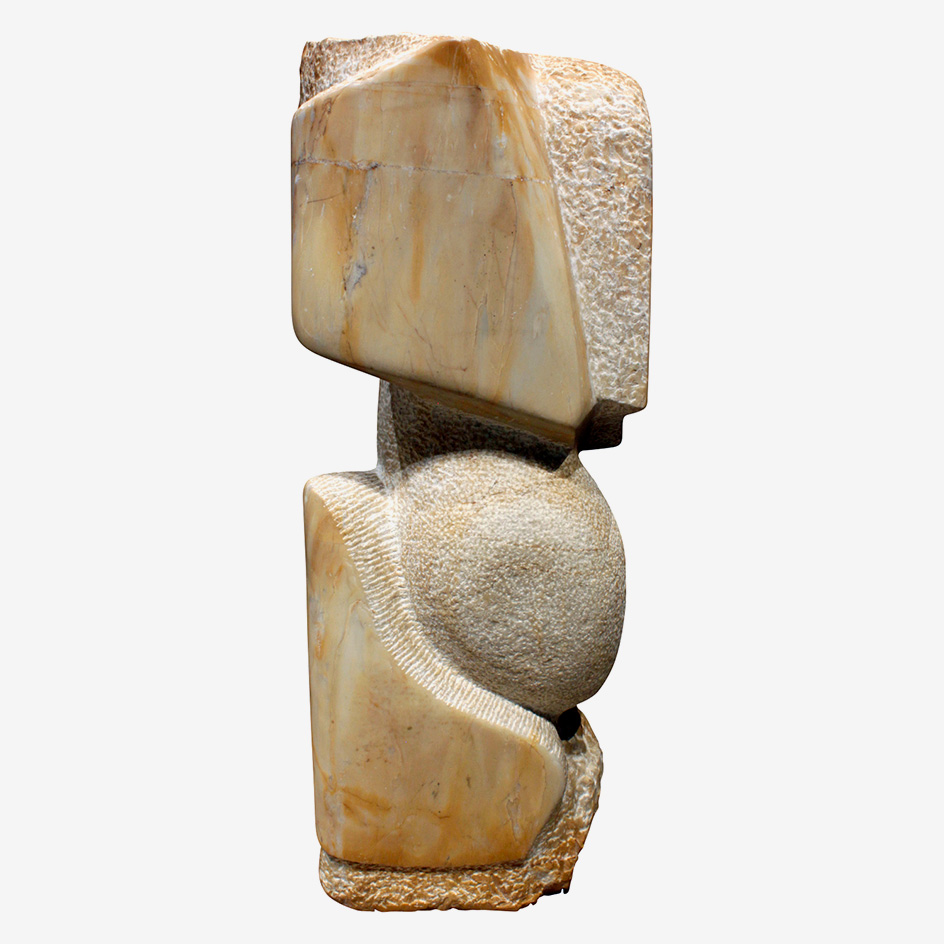
Resilience, c1970s, by Naomi Feinberg, white and orange marble
Born Naomi Levine in New York in 1919, she grew up during the Great Depression. At 17, she met and married writer, painter and book designer Sidney Feinberg, drawn together by a mutual passion for the visual arts. As a young woman in postwar America, she first found creative solace in needlework and fashion, later turning to ceramics before establishing her groove in stone.
In the early 1940s, Feinberg studied alongside the likes of Jose De Creeft and Lorrie Goulet at the New School, the Museum of Modern Art, the Art Students League, and the School of Visual Arts. She discovered a kindred spirit in constructivist painter and sculptor Dorothy Dehner while they were both members of the Studio 725, an alliance of female artists who maintained a studio at Union Square. (A number of Dehner’s sculptures still bear carved inscriptions dedicated to Feinberg.)
A relative latecomer to the art world, Feinberg undoubtedly made up for lost time with a vast and accomplished body of work to her name. She has been represented in numerous exhibitions staged by the Federation of Modern Painters and Sculptors, while her work is held in the archives of American art at the Smithsonian Institute.
The Lobel Modern show demonstrates Feinberg’s resilience in becoming one of the foremost 20th-century artists – a woman boldly sculpting in a man’s world.
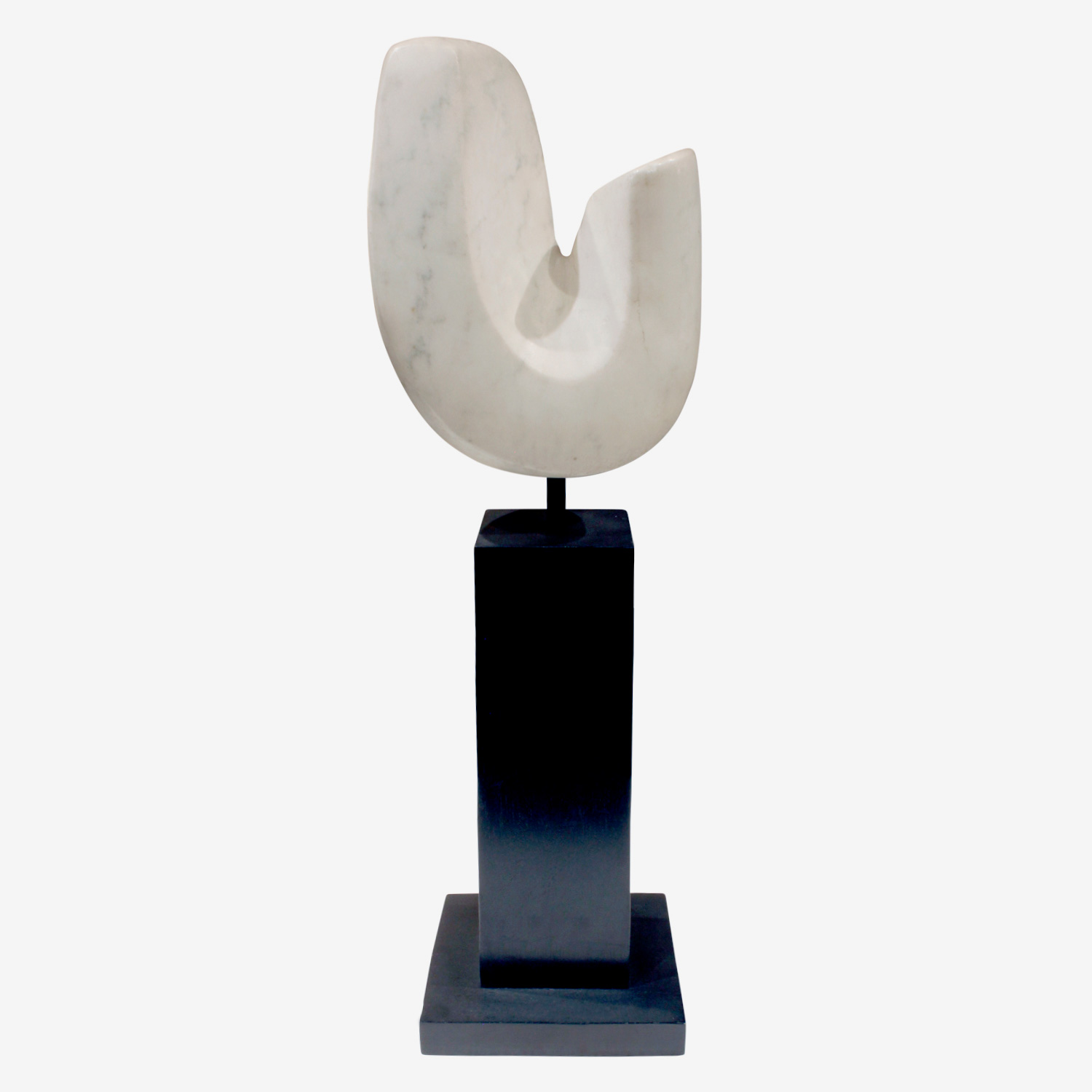
Tenero, c1960s, by Naomi Feinberg, Vermont marble
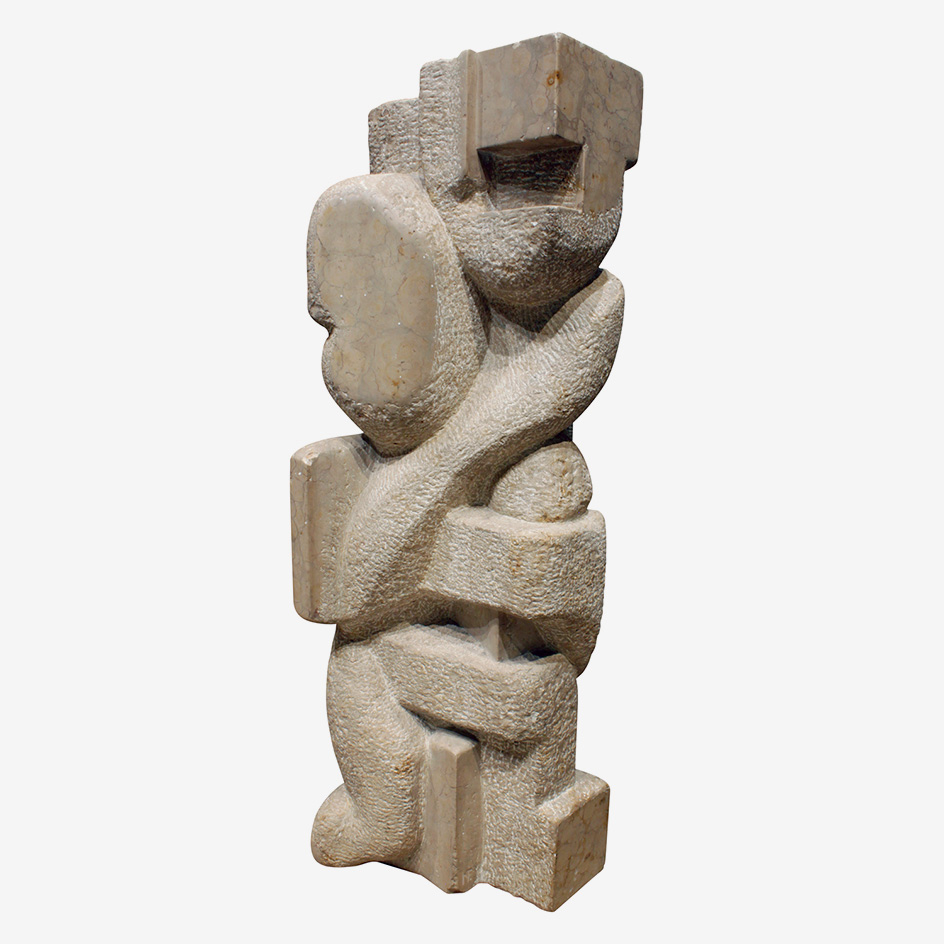
Dream within Dream, c1960s, by Naomi Feinberg, Italian marble
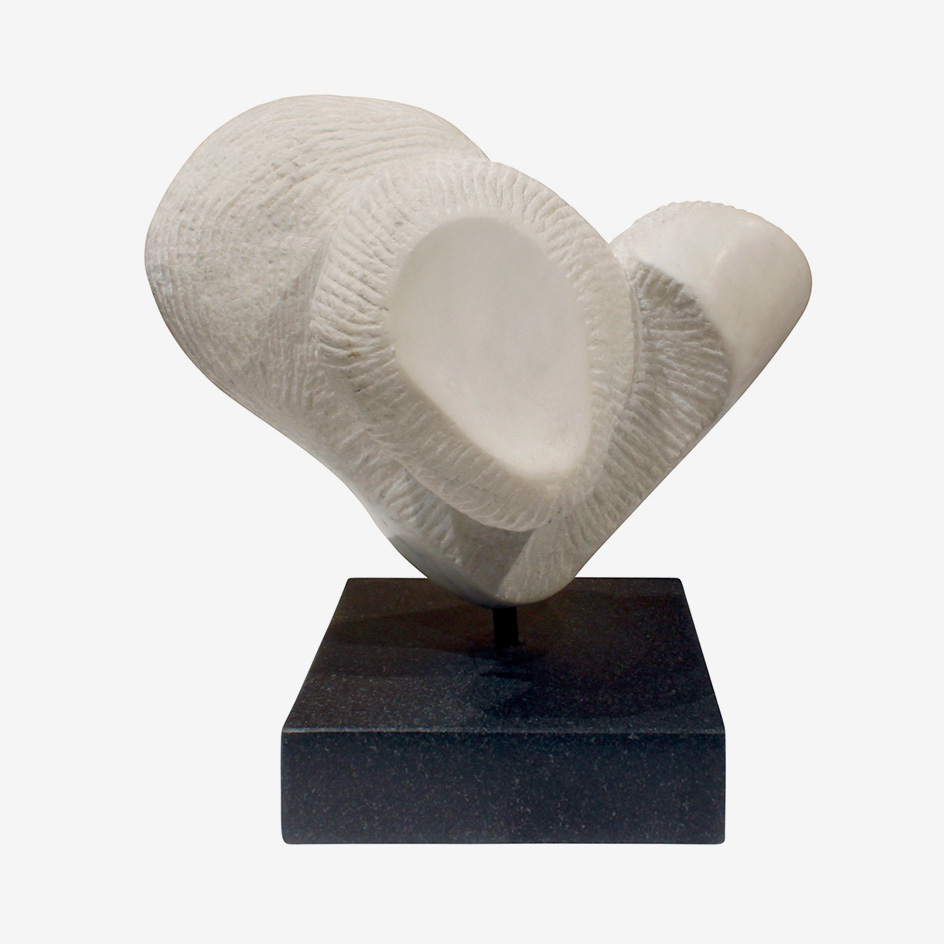
Stretto, c1960s, by Naomi Feinberg, Vermont marble
INFORMATION
‘Naomi Feinberg: A Woman Sculpting in a Man’s World’ is on view until 14 November. For more information, visit the Lobel Modern website
ADDRESS
Lobel Modern
New York Design Center
200 Lexington Avenue
New York
Wallpaper* Newsletter
Receive our daily digest of inspiration, escapism and design stories from around the world direct to your inbox.
Harriet Lloyd-Smith was the Arts Editor of Wallpaper*, responsible for the art pages across digital and print, including profiles, exhibition reviews, and contemporary art collaborations. She started at Wallpaper* in 2017 and has written for leading contemporary art publications, auction houses and arts charities, and lectured on review writing and art journalism. When she’s not writing about art, she’s making her own.
-
 All-In is the Paris-based label making full-force fashion for main character dressing
All-In is the Paris-based label making full-force fashion for main character dressingPart of our monthly Uprising series, Wallpaper* meets Benjamin Barron and Bror August Vestbø of All-In, the LVMH Prize-nominated label which bases its collections on a riotous cast of characters – real and imagined
By Orla Brennan
-
 Maserati joins forces with Giorgetti for a turbo-charged relationship
Maserati joins forces with Giorgetti for a turbo-charged relationshipAnnouncing their marriage during Milan Design Week, the brands unveiled a collection, a car and a long term commitment
By Hugo Macdonald
-
 Through an innovative new training program, Poltrona Frau aims to safeguard Italian craft
Through an innovative new training program, Poltrona Frau aims to safeguard Italian craftThe heritage furniture manufacturer is training a new generation of leather artisans
By Cristina Kiran Piotti
-
 Leonard Baby's paintings reflect on his fundamentalist upbringing, a decade after he left the church
Leonard Baby's paintings reflect on his fundamentalist upbringing, a decade after he left the churchThe American artist considers depression and the suppressed queerness of his childhood in a series of intensely personal paintings, on show at Half Gallery, New York
By Orla Brennan
-
 Desert X 2025 review: a new American dream grows in the Coachella Valley
Desert X 2025 review: a new American dream grows in the Coachella ValleyWill Jennings reports from the epic California art festival. Here are the highlights
By Will Jennings
-
 In ‘The Last Showgirl’, nostalgia is a drug like any other
In ‘The Last Showgirl’, nostalgia is a drug like any otherGia Coppola takes us to Las Vegas after the party has ended in new film starring Pamela Anderson, The Last Showgirl
By Billie Walker
-
 ‘American Photography’: centuries-spanning show reveals timely truths
‘American Photography’: centuries-spanning show reveals timely truthsAt the Rijksmuseum in Amsterdam, Europe’s first major survey of American photography reveals the contradictions and complexities that have long defined this world superpower
By Daisy Woodward
-
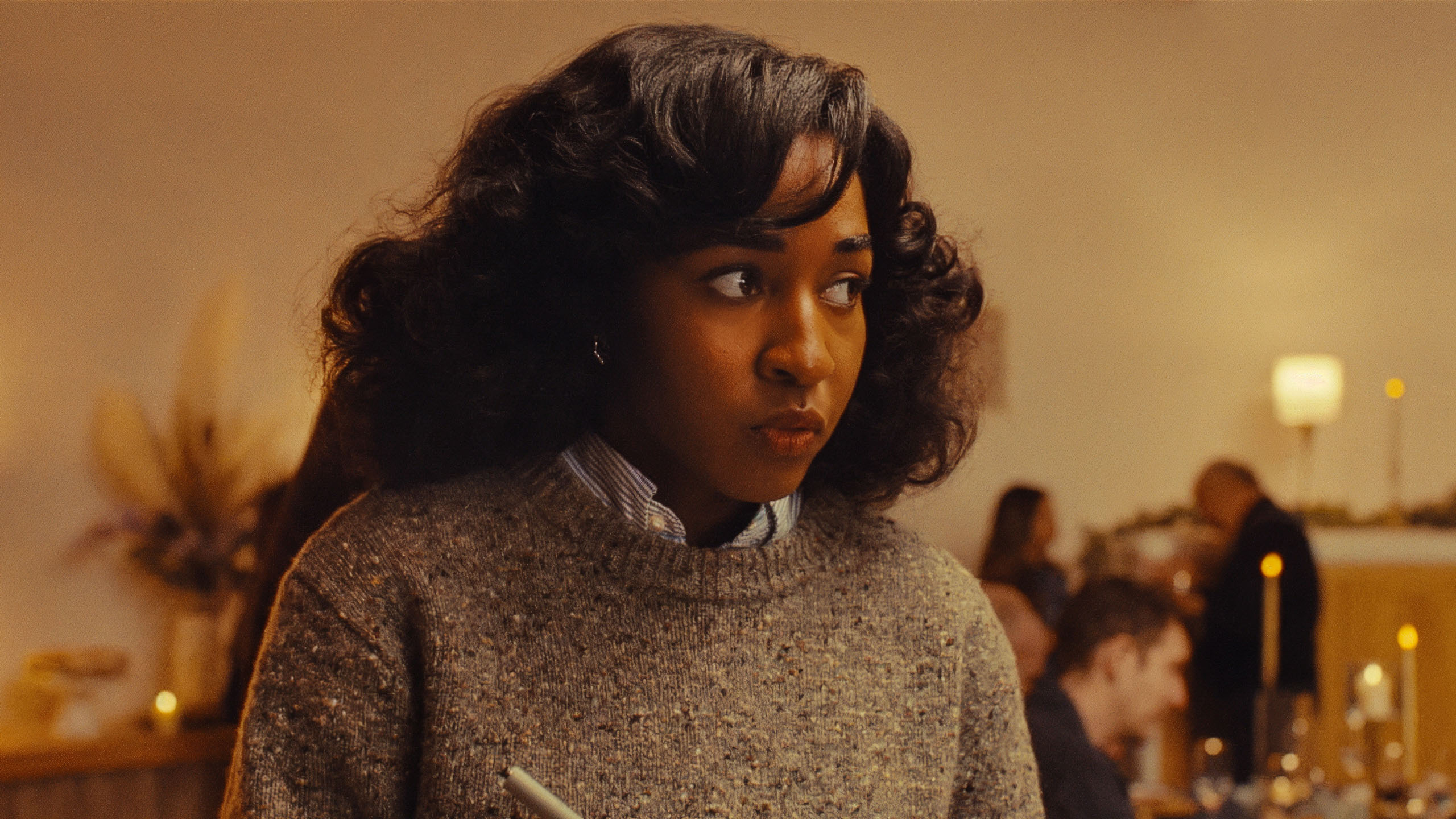 Sundance Film Festival 2025: The films we can't wait to watch
Sundance Film Festival 2025: The films we can't wait to watchSundance Film Festival, which runs 23 January - 2 February, has long been considered a hub of cinematic innovation. These are the ones to watch from this year’s premieres
By Stefania Sarrubba
-
 What is RedNote? Inside the social media app drawing American users ahead of the US TikTok ban
What is RedNote? Inside the social media app drawing American users ahead of the US TikTok banDownloads of the Chinese-owned platform have spiked as US users look for an alternative to TikTok, which faces a ban on national security grounds. What is Rednote, and what are the implications of its ascent?
By Anna Solomon
-
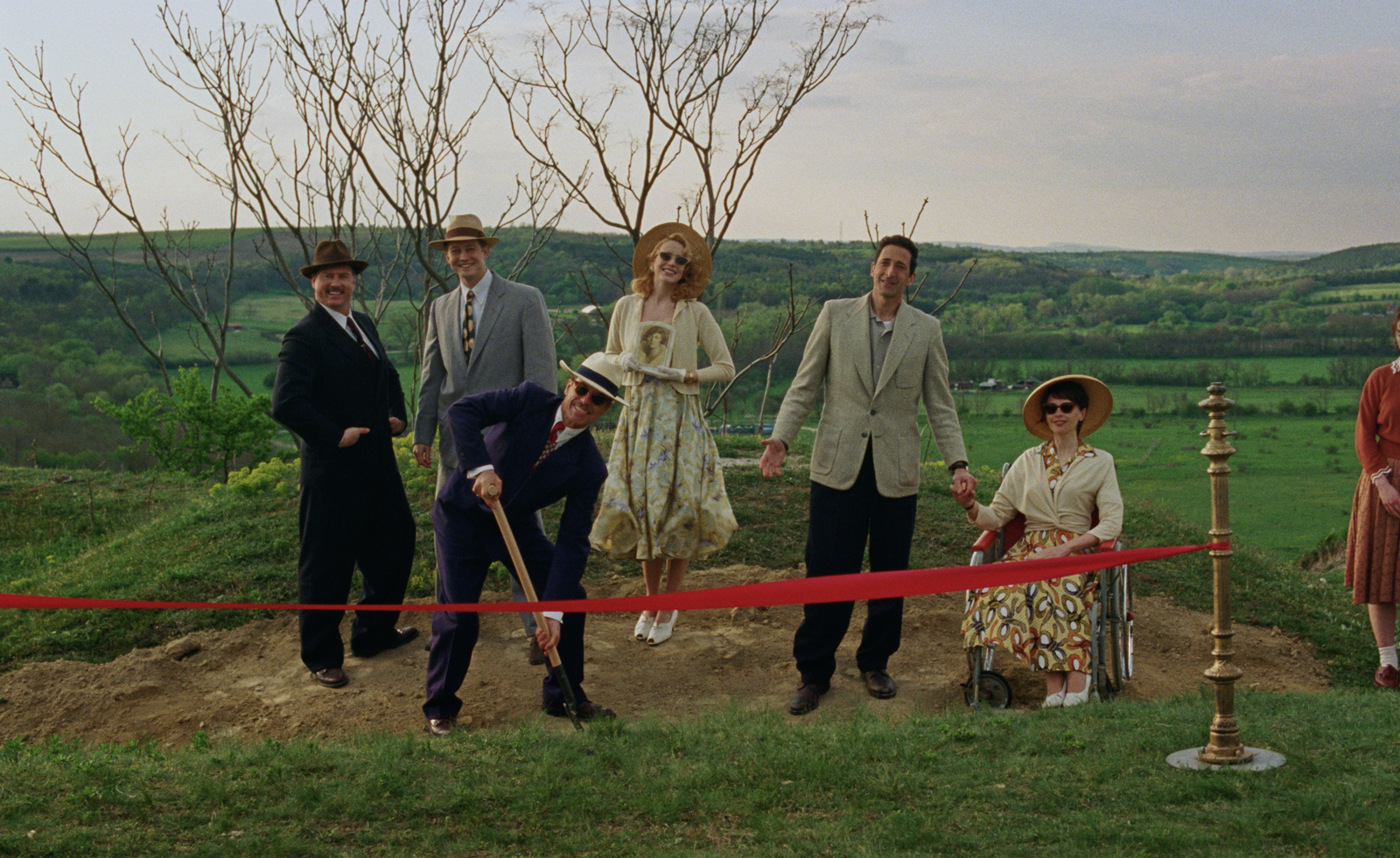 Architecture and the new world: The Brutalist reframes the American dream
Architecture and the new world: The Brutalist reframes the American dreamBrady Corbet’s third feature film, The Brutalist, demonstrates how violence is a building block for ideology
By Billie Walker
-
 Inside Jack Whitten’s contribution to American contemporary art
Inside Jack Whitten’s contribution to American contemporary artAs Jack Whitten exhibition ‘Speedchaser’ opens at Hauser & Wirth, London, and before a major retrospective at MoMA opens next year, we explore the American artist's impact
By Finn Blythe